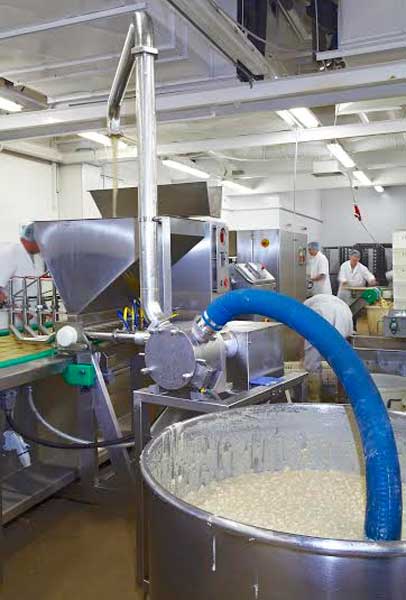Monday, 22/12/2025 | 16:40 GMT+7
Ever wondered how you can benefit from energy savings – even in high viscosity applications?
Florian Walter, Product Manager at MasoSine Process Pumps (part of the Watson-Marlow Fluid Technology Group) explains how...
“Every business we talk to is driven by the double-edged sword of increasingly stringent environmental legislation (such as the Energy Savings Opportunities Scheme, and the Carbon Reduction Commitment) along with the ever-present need to reduce manufacturing costs.
According to the BPMA, pumps account for no less than 10% of the world’s electricity consumption and two-thirds use up to 60% too much power. And, as energy represents 95% of a pump’s life cycle cost, the opportunities for savings are substantial. Here at Watson-Marlow Fluid Technology Group, we sign up to the premise that improving energy efficiency enables manufacturers to increase profitability and remain competitive in today’s cost conscious markets.
But first it is important to understand the technical challenges faced by manufacturers. Many have the need to pump a large range of products, from mayonnaise to meat, or surfactants to silicone. Handling products with such a wide range of viscosities presents a real challenge. The torque required to drive the pump increases in line with viscosity, thus resulting in the need for large electrical motors. These larger motors draw more power, even when not operating at capacity.

We are often asked, “What is the solution?” On one hand, you can use higher efficiency motors with your existing pump technology. With a higher energy efficiency class motor, the saving in electrical power can be increased, but a change in technology can save even more. Alternatively, you can look to replace existing technology with a more efficient principle, such as the replacement of traditional lobe pumps with energy efficient sinusoidal pumps such as our MasoSine technology. These pumps are not affected by viscosity in the same way and can use smaller motors compared with established technologies For example, one customer has reported that they can now use a 4.6kW motor as opposed to 11kW motor for a 1200cp dairy product pumped at 10 bar. What’s more, the exclusive sinusoidal rotor overcomes the limitations of conventional pump technologies. This is a technology which is able to deliver powerful suction with low shear, low pulsation and gentle handling, without the need for high power drives.
It is the energy efficiency characteristics of our MasoSine sinusoidal technology that have led us to launch the concept of MasoSine Energy Efficiency (known as ‘mee’) to our customers. In basic terms, mee enables us to prove (by way of a set of performance curves and calculations) the energy-saving benefits of these pumps to our customers. We can also show how energy savings increase as the viscosity increases.
Businesses who have already used this information to justify changes to a MasoSine solution are already enjoying a range of operational benefits including: lower energy consumption, higher quality and faster processing, with low shear, high suction, low pulsation, gentle handling of whole foods or highly viscous products. This increases the sustainability of a customer’s manufacturing process through a powerful combination of economical operation and maintenance.
Watson-Marlow Fluid Technology Group will be publishing a White Paper on this subject later this year.
Process Industry Performer








 Webinar 2: “Financial Support for Energy Efficiency Enterprises – Opportunities and Challenges”
Webinar 2: “Financial Support for Energy Efficiency Enterprises – Opportunities and Challenges”
 Vietnamese enterprises achieve green growth and cut costs through energy efficiency
Vietnamese enterprises achieve green growth and cut costs through energy efficiency
 Capacity Building for Program Implementing Entity
Capacity Building for Program Implementing Entity
 Enhance Energy Efficiency Knowledge for Managers of Cement Industrial Enterprises
Enhance Energy Efficiency Knowledge for Managers of Cement Industrial Enterprises
 Promoting Energy Efficiency for Technical Staff of Brick and Ceramic Sector
Promoting Energy Efficiency for Technical Staff of Brick and Ceramic Sector
 Capacity building for participating financial institutions of the VSUEE Project
Capacity building for participating financial institutions of the VSUEE Project
 Capacity building for participating financial institutions in Ho Chi Minh City
Capacity building for participating financial institutions in Ho Chi Minh City